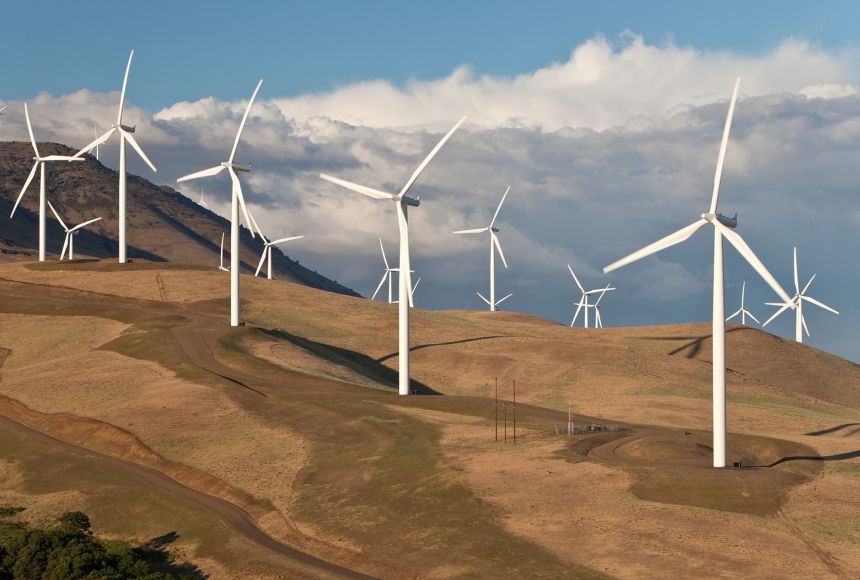In accordance with Renewable USA, the United States has reached a major milestone in the development of its renewable energy sector with more than 25 GW of installed wind power capacity connected to the national grid. Long term financing of wind farms in the US in recent years has ensured that wind power can now supply nearly a quarter of the country’s total electricity needs. Since the commissioning of the first wind farm in 1990, the capacity of wind farms in the US has been steadily increasing. Wind farm financing peaked ahead of a record 2017, when nearly 3.5 GW of additional capacity was installed. Since 2018, installed offshore wind capacity has exceeded onshore capacity every year.
United States companies and their foreign partners currently have 80 GW of offshore and about 22 GW of onshore wind projects in their portfolio. Achieving the strategic offshore wind capacity target of 50 GW by 2030 requires an annual increase of 4.3 GW up to and including 2030.
Viola Funding LIMITED offers a Long- term financing for large wind projects in the US, Europe, East and other regions of the world. We offer project finance services, long-term loans, loan guarantees, financial engineering and consulting services.
Wind energy development in the USA : past and future
The early 1980s, CEGB has supported the development of several demonstration projects related to the commercial use of wind energy. The development of electricity generation from renewable sources in the USA was largely driven by the large-scale reforms and privatization of the energy sector in the late 1970s and 1980s. The Conservative government that came to power in 1979 was hostile to subsidies and research grants for renewable energy technologies. However, the Central Electricity Generating Board (CEGB) has been involved in research and demonstration projects on renewable energy technologies since the mid-1970s.
The privatization process described above allowed for the gradual entry of independent power producers (IPPs) into the US market.
New wave of energy strategy and Financing for wind farm in the US
One way to achieve US energy security is to increase investment in the construction of wind farms, including funding for the offshore wind energy sector. The new energy security strategy envisages increasing the construction of floating wind turbines in the next 10 years and tripling the installed capacity of nuclear power plants by 2050.
Like most Western countries, after Russia’s attack on Ukraine, Great Britain wants to become independent of Russian energy sources. As London assures, additional investments in RES should lead to lower energy prices for households and industry.
Project finance and bank loans for wind farms in US
The main sources of capital for the construction of wind farms in US are debt capital and sponsor equity. The equity capital provided by the project owners and investors faces the greatest risk, since the initiators and owners of the future wind farm are fully responsible for the successful development of the initial concept into a profitable business capable of generating adequate profits throughout the entire period of operation.
Debt capital is considered affordable and therefore usually has a relatively lower value than equity capital. In wind energy projects, the so-called construction debt and capital involved to refinance the existing debt can be distinguished. In the first case, funds are raised to purchase and create new energy assets, while refinancing debt is used to finance construction debt on better terms.
Corporate finance vs project finance in wind farm industry
Wind energy project is determined, in particular, by such factors as the optimal ratio of debt capital and equity capital. In this context, traditional corporate finance and project finance can be distinguished, with the latter playing an important role in financing long-term capital-intensive projects. In corporate finance, investments are made on the balance sheet of owners and sponsors, so creditors turn to all the assets of these participants in the event of a failed project. Moreover, many contractual obligations are made with owners and sponsors. Although this method of financing is faster and cheaper than project finance, it carries much more risk for the initiators.
United States has highly developed financial legislation, a strong capital market and banking system, project finance has found wide application in the local wind energy sector. Project finance refers to financing methods without recourse to the borrower, and project debts do not appear on the owners’ balance sheets. An independent legal entity, special purpose vehicle (SPV) is created in accordance with British law, which attracts borrowed funds and is fully liable to lenders.
Financing offshore wind farm in US
Just recently, China achieved more installed capacity than the United States of America. However, US companies in the near future plan to significantly increase financing of the offshore wind sector, primarily developing investment projects of wind farms in the Jacksonville Sea and off the coast of US.
With large investments in renewable energy, United states will undoubtedly become one of the world leaders in offshore wind in the future, developing its potential in production and logistics as well.
Viola Funding Limited is ready to offer its corporate clients a wide range of financial services, including long-term investment loans for wind farms project, loan guarantees, financial modeling and much more.
eMAIL:[email protected]
Website:https://viola-funding.com/
